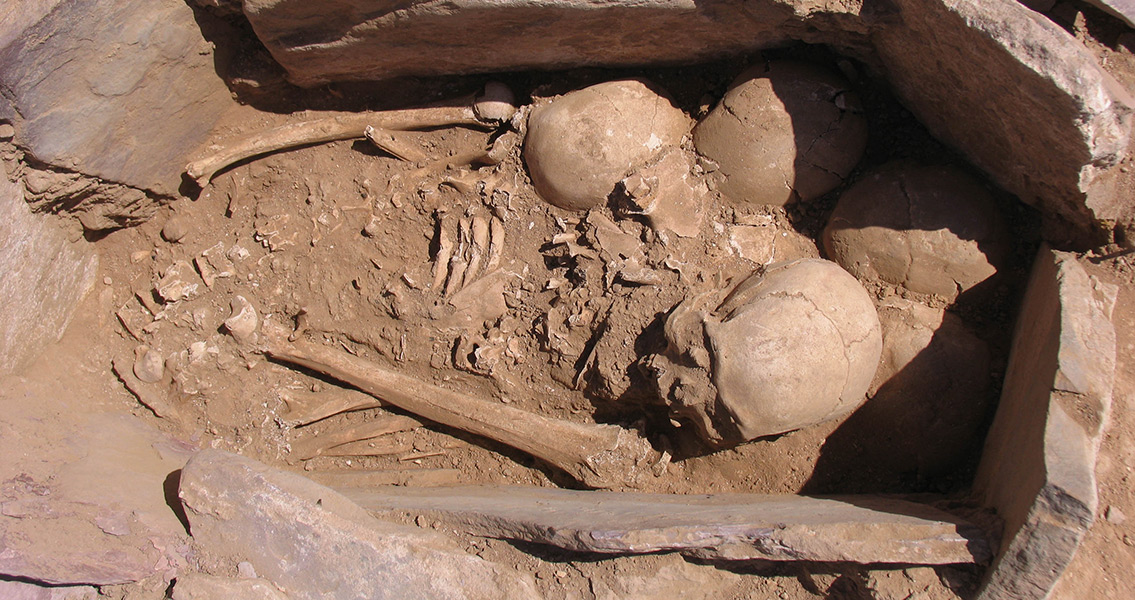<![CDATA[During excavations at Shkārat Msaied, in southern Jordan, a strange burial site was unearthed revealing a ritual unlike any the archaeologists had previously encountered. After the dead were buried and the bodies had decomposed to the point only their skeletons remained; the bones were removed from their grave, the skeletons dismantled and then bones of similar types – and from similar age groups – from multiple skeletons were combined and reburied together. As reported by the Danish scientific journal Videnskab, a researcher from the Department of Cross-Cultural and Regional Studies with the University of Copenhagen compared the find to something out of a horror movie - the body parts had been buried in mass graves after being sorted and grouped into specific categories. Shkārat Msaied is a well-known Neolithic site located approximately 16 km (10 miles) north of Petra in southern Jordan. The site, as well as several others nearby including Basta, Beidha and Ba’ja, has been the location of several different excavation projects over the years beginning in 1999. It dates from the Pre-Pottery Neolithic B area and is comprised of clusters of circular shaped house structures. The excavation suffered a setback in 2013 when illegal and severe digging activities were found at the site, which required impromptu salvage activities to record and repair the damage in addition to restoring the previous state of conservation. Although researchers have discovered bones from more than 70 skeletons affected by the vandalism, Danish researchers have yet to complete their excavation efforts at Shkārat Msaied. Mystifying and as of yet unsolved is the unusually large number of children, ranging in age from small babies to adolescents, buried in this manner combined with an obvious tendency to bury children inside houses. For example, three new burial sites have recently been uncovered, containing the skeletons of at least 10 children as well as two adults. Furthermore, animal bones, including foxes, birds, sheep and goats have been discovered buried right alongside the human remains. It's unknown at this time whether the burials are related to a religious aspect practiced by the population, but there does appear to be a ritualistic pattern associated with this funerary practice. For the most part, the bones have been found to be separated and then placed in private homes. For example, a very intricate stone coffin where the skulls were stacked at one end while the longer bones, those from the arm or the leg for example, were stacked at the other end. It’s been reported that the bones from the old skeletons are extremely fragile and many have been sent to Copenhagen to be studied further. Around the time the skeletons and then the individual bones were buried, around 9,000 years ago, their society was experiencing a major shift from being primarily a hunter-gatherer group who practiced a nomadic existence to that of an agricultural society. The discovery of the bones could provide experts with information regarding the people’s lifestyle as well as the chronic diseases they endured. Excavation at the Shkārat Msaied site is expected to continue well into the foreseeable future. Image courtesy of the University of Copenhagen]]>
Archaeologists Discover a Neolithic Burial Ritual Like No Other
